Your cart is currently empty!

Sexing scorpions – how to recognize males and females
From
on
Scorpions are among the most fascinating and at the same time most mysterious terrarium animals. Many terrarium keepers ask themselves the question at some point: “How can I tell whether my scorpion is male or female?” Sexing scorpions can be tricky, but with the right information and a little practice, the sex can often be clearly determined. In this article, we explain how you can recognize the differences between male and female scorpions and what you should look out for.
External characteristics – What are the differences?
The easiest way to determine the sex of a scorpion is to look at its external features. Although there are differences between the various scorpion species, there are some general clues that can help you distinguish between them.
1. physique:
Male scorpions often have a slimmer and longer physique compared to females, which are usually more compact and broader. The tail (metasoma) in particular is usually longer and narrower in males, while it appears shorter and stronger in females.
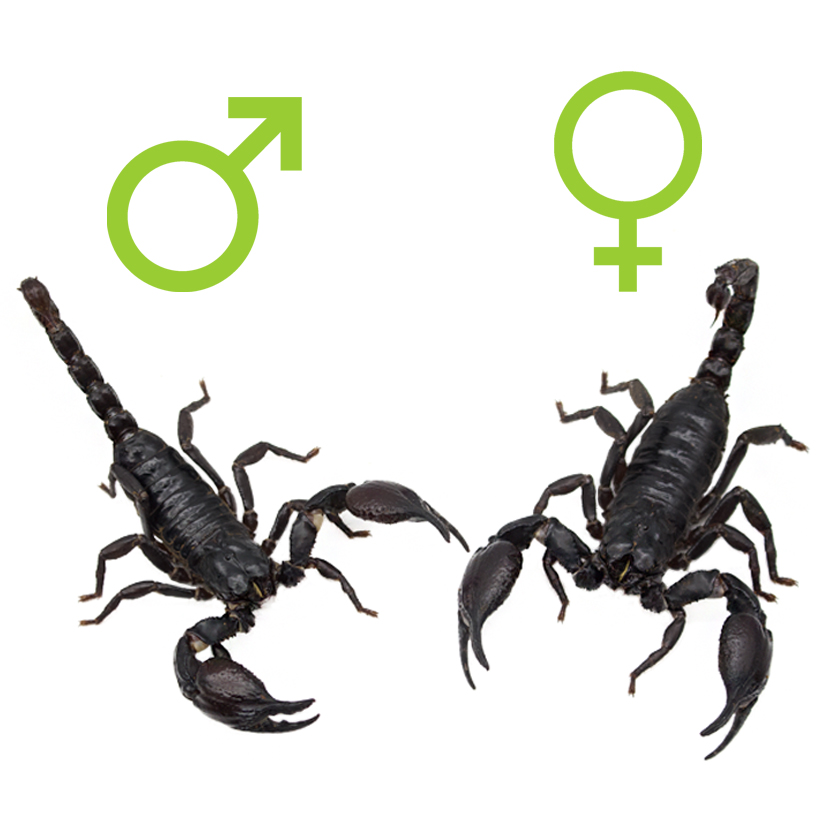
2. pedipalps (claws):
The claws (pedipalps) are another feature that can help with sex determination. In some scorpion species, the claws of the males are narrower and longer, while the females have shorter but stronger claws. However, these differences are not clear for all species, so this method should only be used as an additional indication. Another difference in the males is a small spike on the claws, which helps them to grasp the females during the sexual act.
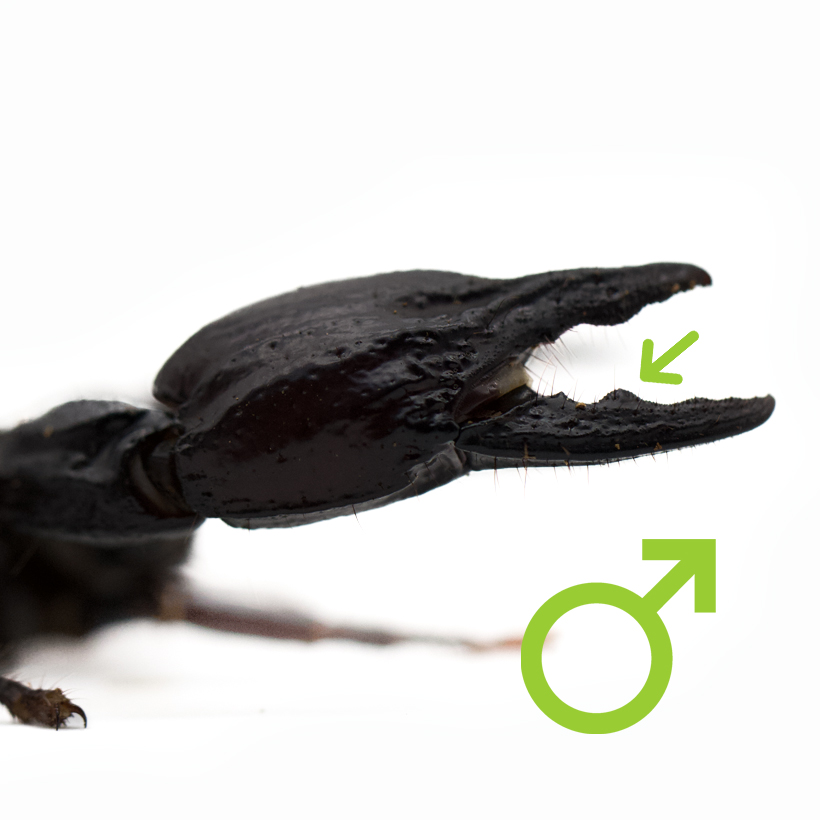
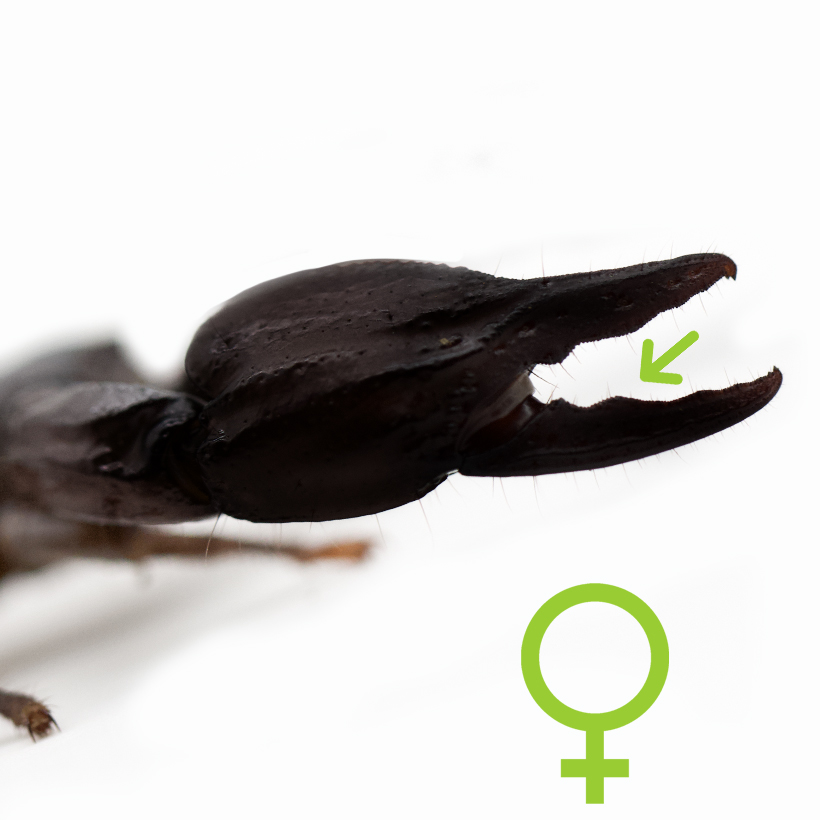
3. comb organs (pectines):
The so-called comb organs or pectines are a characteristic feature of scorpions and are located on the ventral side, near the third pair of legs. In many species, the pectines in males are larger, wider and have more “teeth” (denticulae) than in females. The number and size of these teeth can be a first indication of the sex of your scorpion.
The best way to recognize the difference in size of the pectines is to compare them with the limbs – this is where the difference in size becomes particularly clear.
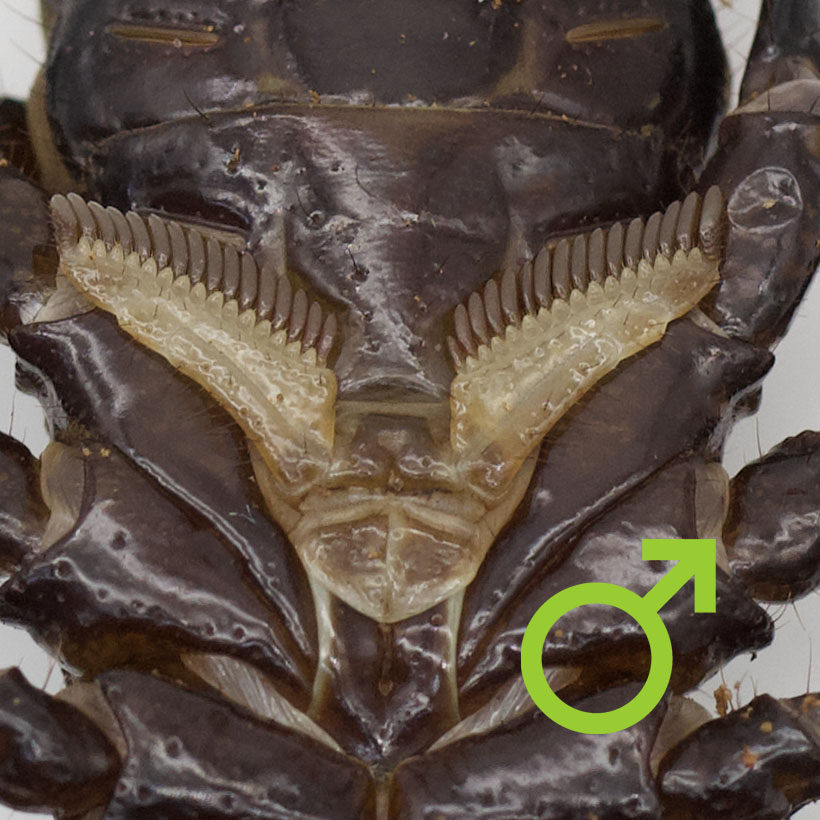
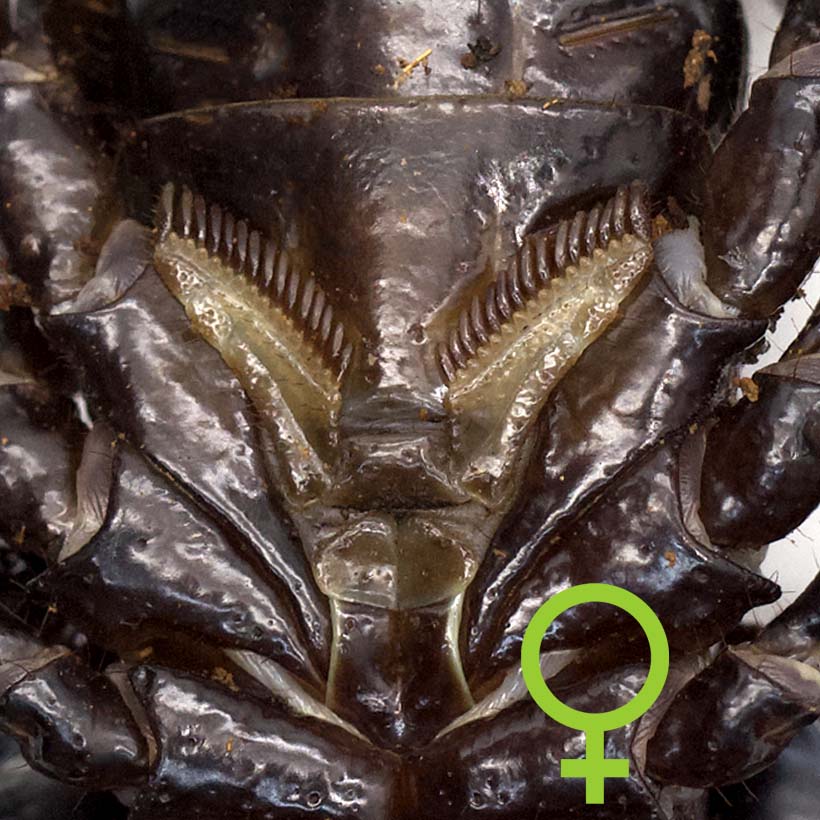
4. genital cover (operculum):
The genital cover, also known as the operculum, is another feature that can help determine the sex of scorpions. It is located on the ventral side, directly in front of the comb organs. In male scorpions, the genital operculum is usually smaller, narrower and more rounded in shape, whereas in females it is wider, more pronounced and pointed. Especially in adult animals, the genital cover can be a helpful indication of the sex, as this difference is often not yet clearly recognizable in younger animals.
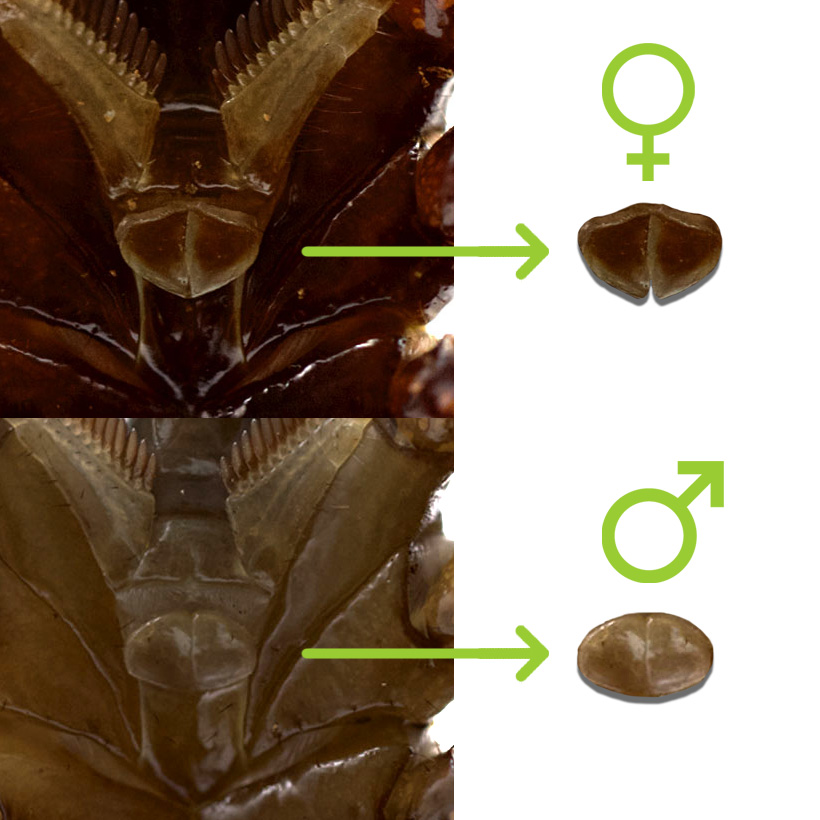
Behavior – Another indication of gender
In addition to the external characteristics, the behavior of a scorpion can also provide information about its gender. Male scorpions are often more active and move around more, especially during the mating season. They are looking for a female and therefore exhibit pronounced migratory behavior. Females, on the other hand, are usually less mobile and spend more time in their hiding place.
Important notes on sex determination
It is important to note that sexing scorpions, especially young animals, is not always easy. Many characteristics only become clear when they reach adulthood, so patience is required. There are also considerable differences between the various scorpion species, so it makes sense to find out about the specific characteristics of the species you are keeping.
Why is sex determination important?
Sex determination is not only important for breeding scorpions, but also for keeping them in a species-appropriate way. Male scorpions are often more territorial and can be more aggressive towards conspecifics, especially during the mating season. Females, on the other hand, may require special conditions for rearing their young.
Conclusion – sex determination in scorpions
Sexing scorpions requires a keen eye and a certain amount of experience. However, by observing the comb organs, body structure and behavior, you can often get clear indications of the sex of your scorpion. Remember that patience and careful observation are the keys to success. Over time, you will develop a better and better sense of whether your scorpion is male or female.
If you have any further questions, please leave them in the comments below the article.

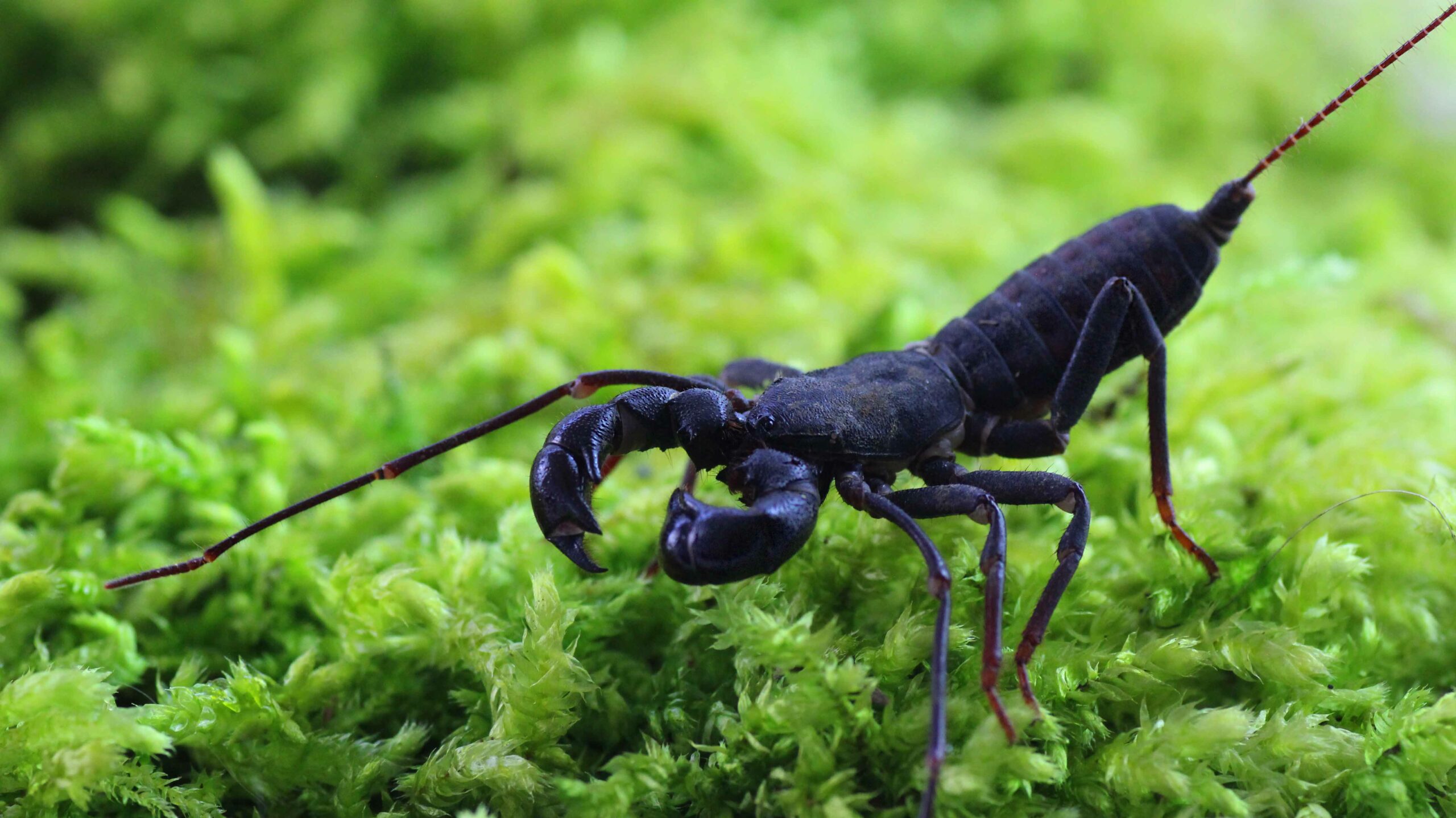




Leave a Reply
You must be logged in to post a comment.